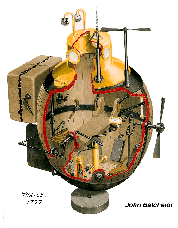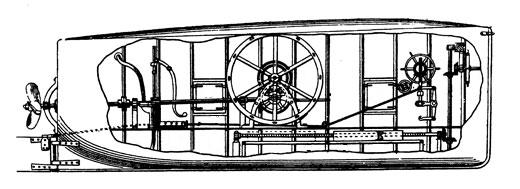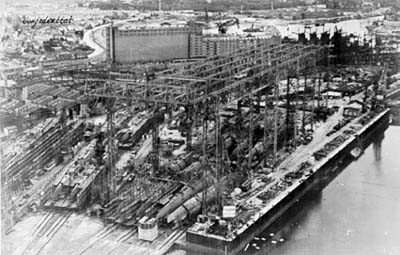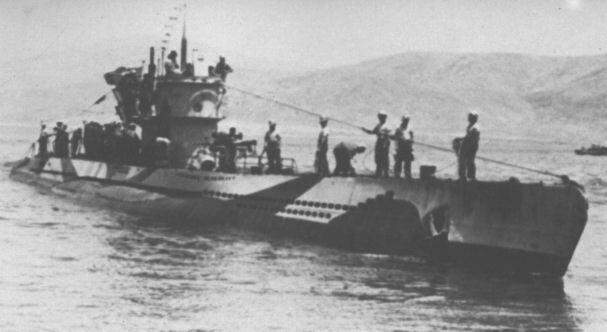|
|
|
|
|
|
|
|
|
|
|
The following is an article that I wrote for a school project. It also comes with a game. Email me if you want the game, which is free.
|
Submarine History Upto First German Sub.
During The year of 1620, and a Dutchman named Cornelis Drebbel invented the world`s first submarine. It was made of wood with a greased leather encasing. This primitive sub was propelled by oars not unlike a rowboat. To move up and down he had pigskin bladders attached to pipes that were outside the sub. When the submarine was surfaced the bladders were tied and when it was submerged the bladders were untied. So if you and the rest of the crew were submerged and wanted to surface you all had to sit on the bladders.
The submarine was surprisingly not used for war until 1776, though several countries had tried. Continental Army Sargent Ezra Lee was the first man to be in a submarine (the Turtle) for war purposes when he attempted to screw a mine on the hull of the HMS Eagle. Unfortunately for him the HMS Eagle had a copper plated hull and he couldn`t screw on the mine. Luckily he escaped safely with the egg-shaped Turtle.
Inventor Robert Fulton (creator of the Clermont) made his own sub in 1798 which he named the Nautilus. The Nautilus was propelled by a screw propeller underwater like the Turtle, but used a sail when surfaced. Also, Robert Fulton introduced the rudders for horizontal and vertical control and compressed air for a longer submerged time. However Robert Fulton stopped working on submarines after the government did not want his sub.
|
 |
German Submarine History Upto U-1
In 1851 the first German submarine was the Brandtaucher. Wilhelm Bauer had made it because of the war with Denmark. The Danes were blockading the harbor at Kiel. At first the Danish Blockade moved out to sea a little upon seeing the Brandtaucher.
On one dive it dove down too far and got stuck in mud.
The pressure in the submersible and the pressure outside were not equal, thus they could not open the hatch. However, because of the water pressure the submarine started leaking and 6 and a half hours later the pressure in the sub and the pressure outside it equaled. Thus the crew and Wilhelm were able to escape their sunken vessel with a burst of pressurized air. (The Brandtaucher was raised in 1887)
Four years later, Wilhelm Bauer built another submarine, the Diable Marin. This time it was for Russia and not for war purposes, but rather to celebrate the coronation of Tsar Alexander II. This sub made about 130 dives.
In 1906 the Kriegsmarine built the first U-boat, U-1. At this time the French and British navies had about sixty submarines each. Thus the Germans had to quickly make U-boats if they were going to compete with other navies.
|
 |
U-boats in World War I
The date is August 1, 1914. Europe erupts into war, the Triple Enente vs. the Triple Alliance. The race for superior sea power before the war inevitably leads to the the defeat of all who do not have a great navy. Thus the German High Seas fleet must speed up its U-boat production for the fleet had only 20 U-boats.
On September 5, 1914 the HMS Pathfinder is torpedoed by U-21 of the coast of Scotland making it the first ship to be sunk by a u-boat. This is soon followed by more successes for the U-boat Arm. About 6,600 merchant ships were sunk by U-boats. During May, 1915 U-20 sank the RMS Lusitania, a passenger liner. This helps to bring the US closer to war.
Though at the beginning of the war there were only 20 U-boats, by the end of the war 355 more u-boats had been built. This speed of shipbuilding is because of the 10 shipyards working on them. These numerous vessels came in several different types: gasoline power u-boats, Mittle-U, U-Cruisers, Merchant U-boats, UB coastal torpedo attack u-boats, UC coastal minelayers, and UE ocean minelayers. 102 u-boats were lost during the 4 years of fighting.
Also during this war the u-boats acted alone. It was every man for himself, though some people thought that u-boats should work in groups. It wasn't until the second world war that the "Wolf-Pack" tactics came into play.
|
 |
The Shipyards
There were shipyards in Bremen, Hamburg, Vegesack, Flensburg, Kiel, and Danzig (now Gdansk) during the First World War. Blohm and Voss, Hamburg produced the most U-boats in the Great War, 81. This was one of the most important shipyards during the war.
During the next world war, a total of 19 shipyards in 11 cities produced the deadly u-boat. The cities were: Bremen, Hamburg, Kiel, Lübeck, Stettin, Danzig, Flensburg, Vegesack, Rostock, Wilhelmshaven, and Emden. These shipyards built a total of 1,153 u-boats from 1935-1945.
|
 |
U-boat Tactics and Operations During WWII
World War II brought along some changes for the U-arm. The most important is the creation of the "Wolf-Pack" tactics. These tactics were the brain child of Karl Doenitz, the person who would later become the Grand Admarial of the Kriegsmarine. These tactics proved to be superior to the tactics used in World War I. The tactics did not used until the fall of France in 1940.
This tactic involved having u-boats u-boats in patrols and having them scout for convoys. Once a convoy was sighted, a u-boat would chase it to find out the speed and the direction of the convoy. Then the patrol would surround the convoy and
attack all at once. This normally happend at night. The sizes of the patrols varied for 3-20 u-boats and they normally stayed out at sea for two weeks.
Operation Regenbogen
On April 30, 1945 Grand Admarial Karl Doenitz ordered all the unnecessary ships to be scuttled to preserve the honor of the Kriegsmarine. However, he kept the struggle going for a few days to rescue as many boats as possible from the Baltic Sea and to give the u-boat commanders time to scuttle their ships. But on May 4, the Allies force Doenitz to withdrawl his orders, but U-boat commanders scuttle about 232 u-boats in the Baltic Sea.
Operation Deadlight
The code name for the scuttling of unwanted u-boats after World War II. Most u-boats (if not all) were scuttled near Lisahally, Northern Ireland or Loch Ryan Scotland. About 120 u-boats were scuttled during this operation.
|
 |
|
|
|
|
Bibliography
|
|
http://inventors.about.com/library/inventors/blsubmarine5.htm
http://www.submarine-history.com/NOVAone.htm
http://members.tripod.com/Tenika/uww2.htm
http://www.dutchsubmarines.com/specials/special_drebbel.htm
http://www.naval-history.net/WW2BritishShipsDestroyers.htm
http://www.naval-history.net/WW2CampaignRoyalNavy.htm
http://www.naval-history.net/WW2BritishShipsAircraftCarriers.htm
http://www.uboat.net
http://www.wikipedia.org/wiki/u-boat
http://www.mce.k12tn.net/ww1/lusitania.htm
http://www.numa.net/press/u21.htm
http://www.battleships-cruisers.co.uk/light_cruisers.htm
http://www.geocities.com/CapeCanaveral/Cockpit/4745/semeste2.html
MS Encarta CD-Rom Article "Submarines" by Ed Offley
Ten Years and Twenty Days
By Karl Doenitz
|
|
|
|
|
|
|
|
|